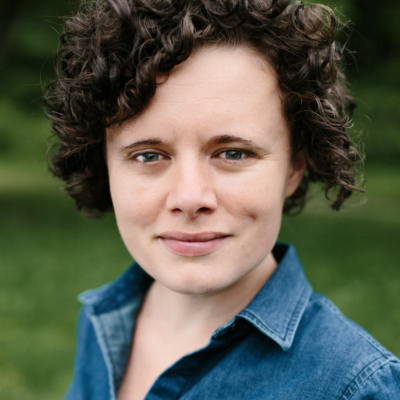As its June 30 closing date approaches, the Charlottesville Ice Park faces the real possibility of lying dormant. There are currently no interested buyers or tenants for the venue, according to co-owner Roberta Williamson.
“I’m anticipating that it will be empty for a while,” Williamson told C-VILLE.
A darkened ice park may give families one fewer reason to visit the Downtown Mall, and it might even trigger the demise of the Mall’s vibrancy, says the park’s brainchild, Lee Danielson (with no apparent irony, given his role in the vacant tower known as the Landmark Hotel). Danielson and Colin Rolph co-developed the ice park and oversaw its opening in 1996. Roberta and Bruce Williamson purchased the park for roughly $3.1 million in 2003.
|
Bowling alley? Arcade? Or one more vacant sign of the times? With only a month before its closing date, Ice Park co-owner Roberta Williamson says the space is yet to find a future. |
“When I first came to Charlottesville, Downtown was a place that people didn’t want to bring their children,” Danielson told C-VILLE. “I saw the ice park as an important piece of the jigsaw puzzle that gave families something to do. And if the Mall ends up being nothing but bars and restaurants, and it loses its family appeal, it will eventually degrade.
“You’ll start seeing [retailers] closing up more so. You’ll have blight again.”
The ice park has become a parent-approved hangout for local teenagers. Children under 12 must be accompanied by an adult, and those under 16 must let staff members know the whereabouts of their parents. The park also has security cameras and filters its music choices.
“Our biggest constituency on Friday and Saturday nights is middle schoolers,” Williamson said. “And it’s a safe place, a good place to be independent for two hours. Parents can go down the mall and have dinner, and pay $10 for skating for their kids. It serves a real function.”
And that function is worth preserving, according to Danielson, who said city and county officials should consider subsidizing the ice park’s operating shortfall. Danielson pegs the shortfall at $200,000 a year, “a very insignificant cost for the community.”
“If you look at the sales tax generated prior to the ice park versus the sales tax over the last decade, there’s no comparison,” Danielson said. “I wouldn’t let that thing go dark.” City spokesman Ric Barrick said that while revenue for Mall businesses has increased since 1996, “it would also be impossible and unrealistic to attribute it to any one source.”
Williamson is certain that the two local governments do not want to add the ice park to their tabs.
“If they wanted to take it over,” she said, “they would have come forward when we made it available. And I would not ask the government to underwrite a private business. To me, that would be like ACAC asking for underwriting from the city and county.”
With local government intervention unlikely, the question becomes: Without the ice park, what activities could fit in its place that would attract families—and business—to the Mall?
For answers, C-VILLE enlisted the acumen of Alloy Workshop architect Dan Zimmerman, who mentioned a few possibilities for the 31,000 square-foot space. Among them: a bowling alley, an indoor farmers’ market, a mini golf course, a go-kart track and a Dave & Buster’s-type hangout—a combo restaurant and arcade. However, he saw the most promise in a multi-purpose sports park.
“The building doesn’t have to be one thing,” Zimmerman said. “It’s big enough that you can subdivide it into many uses.”
A sports park that could transition from artificial turf to ice to half pipe to roller rink to bowling alley might serve the Charlottesville Derby Dames, who are forced to call their next roller derby in Fishersville a home bout, or skaters who are unsure where McIntire Skate Park will be relocated once the Meadowcreek Parkway is built.
Pipe dreams aside, Downtown parking issues and the high cost of maintaining operations on the Mall would make any endeavor challenging. Additionally, potential venture capitalists have told Williamson, she says, that they are reluctant to buy, despite a price tag of $4.1 million—$2 million less than the city’s assessed value and “somewhat of a bargain.”
“Those sorts of people are saying, ‘The business model just isn’t good enough to warrant the investment at this point,’” she said.






